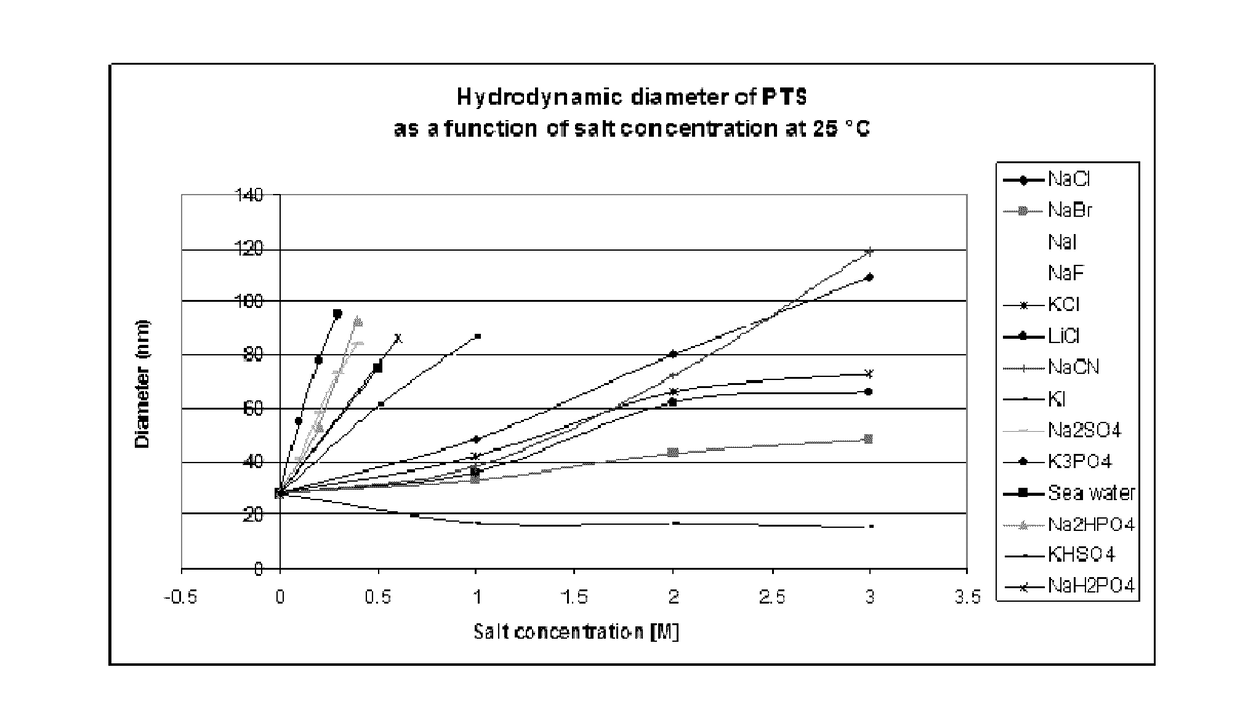Surfactant-enabled transition metal-catalyzed chemistry
a technology of transition metals and surfactants, applied in the field of surfactant-enabled transition metal-catalyzed chemistry, can solve the problems of reducing the number of options for multiple peg-related side products, reducing the cost of original kodak synthesis using natural vitamin e, and achieving low cost of all items of commerce, good reaction efficiency, and economic production of this surfactan
- Summary
- Abstract
- Description
- Claims
- Application Information
AI Technical Summary
Benefits of technology
Problems solved by technology
Method used
Image
Examples
example 1
Preparation of TPGS-M-PEG-750
[0158]
[0159]To a solution of DL-α-Tocopherol (4.30 g, 10.00 mmol) and succinic anhydride (1.50 g, 15.00 mmol) in toluene (20 mL), Et3N (0.35 mL, 2.50 mmol) was added at 22° C. with stirring, and the stirring was continued at 60° C. for 5 h. Water was added to the reaction mixture and extracted with CH2Cl2. The combined organic layers were washed with 1(N) HCl (3×50 mL), water (2×30 mL), dried over Na2SO4 and concentrated in vacuo affording a yellow liquid, which was purified by flash column chromatography on silica gel eluting with 10% EtOAc / hexane to 35% EtOAc / hexanes gradient to afford DL-α-tocopherylsuccinate (5.25 g, 99%) as a white solid. mp 68-71° C.; IR (neat): 2926, 1757, 1714, 1576, 1463, 1455, 1415, 1377, 1251, 1224, 1151, 1110, 1078, 926 cm−1; 1H NMR (400 MHz, CDCl3): δ 2.94 (t, J=6.8 Hz, 2H), 2.84 (t, J=6.8 Hz, 2H), 2.59 (t, J=6.8 Hz, 2H), 2.09 (s, 3H), 2.02 (s, 3H), 1.98 (s, 3H), 1.85-1.71 (m, 2H), 1.56-1.50 (m, 3H), 1.43-1.05 (m, 21H), 0.88...
example 2
General Procedure for Ring-Closing Metathesis
[0162]Diene (0.20 mmol) and Grubbs-2 catalyst (3.4 mg, 0.004 mmol) were added into a Teflon-coated-stir-bar-containing Biotage 2-5 mL microwave reactor vial at rt, and sealed with a septum. An aliquot of TPGS-M-PEG-750 / H2O (2.0 mL; 2.5% TPGS-M-PEG-750 by weight; all RCM reactions were conducted at 0.1 M unless stated otherwise) was added, via syringe, and the resulting solution was allowed to stir at rt for 3 h. The homogeneous reaction mixture was then diluted with EtOAc (2 mL), filtered through a bed of silica gel, and the bed further washed (3×5 mL) with EtOAc to collect all of the cyclized material. The volatiles were removed in vacuo to afford the crude product that was subsequently purified by flash chromatography using silica gel (EtOAc / hexanes) to afford the desired products.
1-Tosyl-1,2,5,6-tetrahydropyridine
[0163]
[0164]The representative procedure was followed using N-allyl-N-(but-3-enyl)-4-methylbenzenesulfonamide (53 mg, 0.20 m...
example 3
General Procedure for Olefin Cross-Metathesis
[0167]Alkene (0.50 mmol), acrylate (1.00 mmol) / ketone (1.50 mmol) and Grubbs-2 catalyst (8.5 mg, 0.010 mmol) were sequentially added into a Teflon-coated-stir-bar-containing Biotage 2-5 mL microwave reactor vial at rt, and sealed with a septum. An aliquot of TPGS-M-PEG-750 / H2O (1.0 mL; 2.5% TPGS-M-PEG-750 by weight; all cross-coupling reactions were conducted at 0.5 M unless stated otherwise) was added, via syringe, and the resulting solution was allowed to stir at rt for 12 h. The homogeneous reaction mixture was then diluted with EtOAc (2 mL), filtered through a bed of silica gel, and the bed further washed (3×5 mL) with EtOAc to collect all of the cross-coupled material. The volatiles were removed in vacuo to afford the crude product that was subsequently purified by flash chromatography on silica gel (EtOAc / hexanes) to afford the title compounds.
(E)-tert-Butyl 11-(tert-butyldimethylsilyloxy)-2-undecenoate
[0168]
[0169]The representative...
PUM
| Property | Measurement | Unit |
|---|---|---|
| reaction rate | aaaaa | aaaaa |
| reaction rate | aaaaa | aaaaa |
| reaction rate | aaaaa | aaaaa |
Abstract
Description
Claims
Application Information
 Login to View More
Login to View More - R&D
- Intellectual Property
- Life Sciences
- Materials
- Tech Scout
- Unparalleled Data Quality
- Higher Quality Content
- 60% Fewer Hallucinations
Browse by: Latest US Patents, China's latest patents, Technical Efficacy Thesaurus, Application Domain, Technology Topic, Popular Technical Reports.
© 2025 PatSnap. All rights reserved.Legal|Privacy policy|Modern Slavery Act Transparency Statement|Sitemap|About US| Contact US: help@patsnap.com



